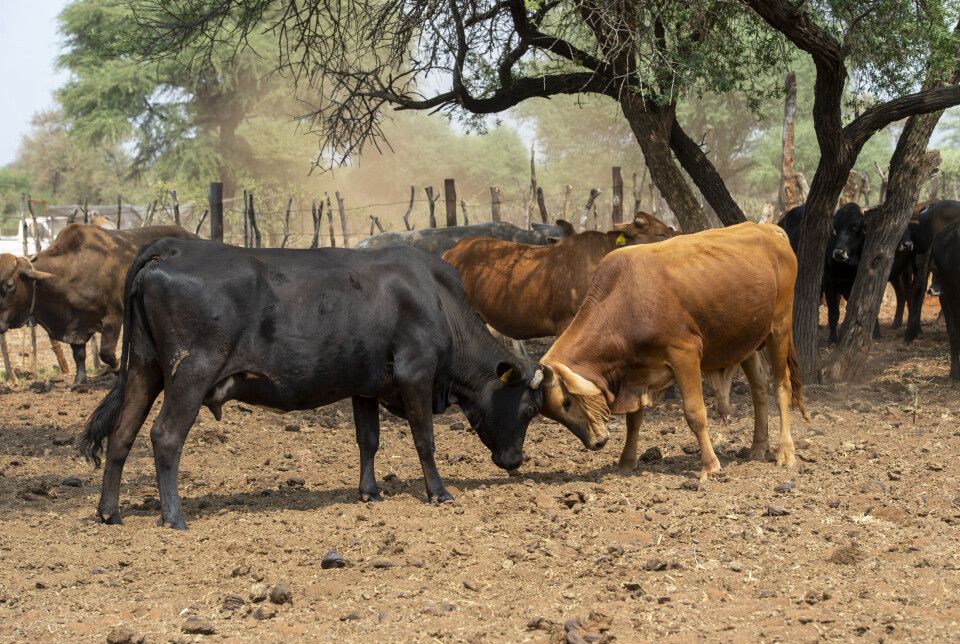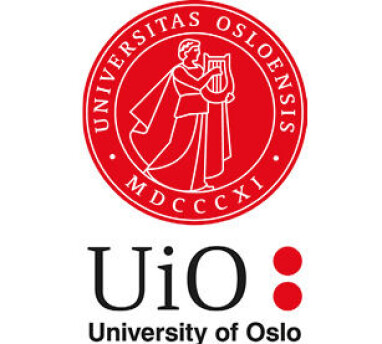THIS CONTENT IS BROUGHT TO YOU BY University of Oslo - read more

Beef exports from Botswana to Norway affect nature in both countries
Preferential trade agreements enable Norway to import large quantities of meat from Africa. This may contribute to undermining climate measures in agriculture.
In Norwegian grocery stores you will find tenderloin from both Botswana and Namibia side by side with locally produced beef. This meat is central to the research of Pierre du Plessis at the University of Oslo.
“When I started working on this project two years ago, both the production and consumption of beef was declining in Norway, but there was still a gap in the market. This gap was partly filled with an import quota from Africa,” du Plessis says.
The packaging makes the meat look like a cheap alternative, but the quality is just as good.
“The African beef is wrapped in plastics and seems to be somewhat stigmatised, but it is actually really good quality beef. And it is mostly free ranging, grass fed, and organic,” he says.
In 2024, 2,700 tonnes of boneless beef from Botswana and Namibia can be imported duty-free, according to Norwegian Customs (link in Norwegian).

Pierre du Plessis has studied the cattle industry in Botswana for several years. Economically, it is often considered a success story, largely thanks to the trade agreement with Norway.
“Large quantities of beef are exported from Botswana to Norway. It accounts for the biggest portion of export profits of beef in Botswana,” du Plessis says.
Want to stop duty-free imports
du Plessis has now started to take a closer look at Norwegian cattle production. He quickly realised that this is a sensitive political topic.
For example, the youth organisation of the Norwegian Centre Party has called for stopping duty-free imports of beef from Namibia and Botswana (nationen.no, link in Norwegian).
“They see it as benefiting African farmers more than Norwegian farmers. They are also calling into question whether this is actually helping the poorer farmers in Botswana or if it is just reproducing an elite class of cattle farmers,” du Plessis says.
The import of African meat coincides with policy changes in Norway's own meat production industry.
“If you go to any of the websites of the Norwegian cattle farming industry, it is described as moving towards greener and more sustainable approaches to cattle farming,” du Plessis says.
The descriptions are often illustrated by cows grazing freely outdoors, as many Norwegians like to remember from their childhood. But it does not seem that this is the direction the cattle industry as a whole is moving.
“Cattle are kept mostly inside today and are let out to graze freely for only short intervals throughout the year. As cattle farming has industrialised, cattle spend less and less time out in cultural grazing lands,” du Plessis says.
“At the same time, there is a cultural movement wanting to reclaim more of the cultural grazing lands. There is talk about how Norway is undergrazed.”

Overgrazing in Botswana
In Botswana, the situation is the complete opposite.
“In Botswana, the problem is rather that there is overgrazing. The grass does not have time to recover,” du Plessis says.
The growing cattle industry has major negative consequences for nature and for the wildlife that traditionally roamed freely on the savannahs of the Kalahari.
“The cattle industry in Botswana is beginning to drink the groundwater dry. It is destroying the very conditions they depend on to grow. Also, the growth of the cattle industry occupies the space that wildlife used to move through,” du Plessis says.
For example, in 1980, there were around 250,000 wildebeest in the Kalahari. Today, the population is under 10,000. The fences that are put up to ensure that the beef meets the strict export requirements interfere with the wildebeest's natural migrations.
Regional responses to global problems
As an anthropologist, du Plessis is not out to tell farmers what to do, neither in Norway nor Botswana. He is more interested in looking at how climate action in one place can have consequences in a completely different part of the world.

“My idea is to try to tell a story of global connection. We have regional responses to global climate change and environmental crises, but that are embroiled in a global trade agreement that has effects elsewhere in the world. This might not be undermining the global environmental crisis but just shifting the problem elsewhere in the world,” du Plessis says.
Although the transition to more indoor cattle production may be sustainable, it affects the Norwegian landscape. Shrubs and trees move into former grazing areas.
And although there is no direct causality, there is a link through trade agreements to cattle production and landscape change in Botswana.
“How is the growth of the cattle industry and the effect it has on the environment in Botswana ecologically, somehow a shadow ecology of the Norwegian cattle industry?When we try to find solutions to mitigate climate change and challenge the environmental crisis, it is important to think how those strategies need to be enacted locally but still can have long distance effects,” du Plessis says.
He adds that the consequences of policy and political changes in the Global North tend to disproportionately affect the Global South, not only perpetuating the same problems in different parts of the world but also deepening the historical inequalities that have developed over time due to colonialism.
Reference:
du Plessis, P. When boreholes become herders, cattle menace grasslands, field report in Feral Atlas: The More-than-Human Anthropocene, Stanford University Press, 2021.

This content is paid for and presented by the University of Oslo
This content is created by the University of Oslo's communication staff, who use this platform to communicate science and share results from research with the public. The University of Oslo is one of more than 80 owners of ScienceNorway.no. Read more here.
More content from the University of Oslo:
-
Queer opera singers: “I was too feminine, too ‘gay.’ I heard that on opera stages in both Asia and Europe”
-
Putin’s dream of the perfect family
-
How international standards are transforming the world
-
A researcher has listened to 480 versions of Hitler's favourite music. This is what he found
-
Researcher: "AI weakens our judgement"
-
New, worrying trend among incels, according to researcher




































